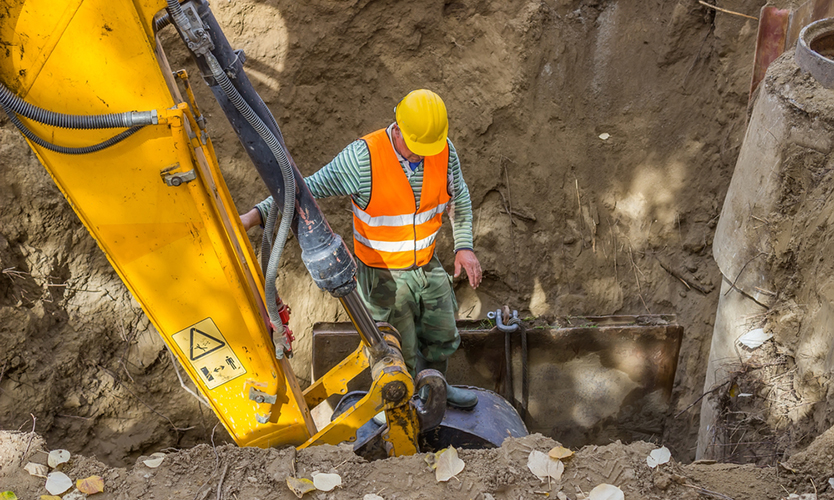Much of what directs the trajectory of a workers compensation claim has little to do with the claim itself — the injury, the prognosis — and much to do with the claimant’s everyday life, such as where they live or how much money they have in the bank.
Experts say focusing on the so-called “social determinants of health” of an injured worker has the potential to drive better outcomes for injuries and is in line with “whole-worker” health and advocacy trends in workers comp in recent years.
“We all said, ‘We need to be better advocates,’” said Kimberly George, Chicago-based global head, innovation & product development, at Sedgwick Claims Management Services Inc.
“Then it really got into ‘well, how do we do it?’” she said.
“Do they have ambulatory barriers? Food insecurity? Language barriers? Health literacy? Do they live in an area that’s prone to crime and violence? Do they have transportation? What are their living conditions? All of those things are very interconnected” when it comes to recovering from an injury, said Mariellen Blue, Wayne, Pennsylvania-based national director of case management services at Genex, a division of workers comp services conglomerate Enlyte Group LLC.
According to the American Hospital Association, 40% of a patient’s health is associated with socioeconomic factors and 10% is based on physical environment, while only 20% is connected to medical care. Aware of this issue, the Centers for Medicare & Medicaid Services this year adopted a coding methodology for tracking such issues as “problems related to upbringing” and “problems related to housing and economic circumstances.” Thirty percent is attributed to health choices.
Workers comp experts say the industry is catching on.
For a report released in August, Chicago-based managed care provider Rising Medical Solutions held a series of focus groups with employers, insurers, state funds and third-party administrators. It found that many believed training on societal risk factors “that go beyond the walls of the workplace, such as housing instability or food insecurity,” can help improve outcomes, as can applying “community resources and social interventions for injured employees with potential health disparities.”
 The topic was discussed at the Workers’ Compensation & Risk Conference in Dana Point, California, in September, with panelists — a claims handler for a facilities management company whose claims mostly arise from janitorial work, a return-to-work specialist and a workers comp defense lawyer — stressing the importance of addressing social issues.
The topic was discussed at the Workers’ Compensation & Risk Conference in Dana Point, California, in September, with panelists — a claims handler for a facilities management company whose claims mostly arise from janitorial work, a return-to-work specialist and a workers comp defense lawyer — stressing the importance of addressing social issues.
It’s estimated that as much as 80% of an individual’s health is connected to factors related to the person’s environment, and a work injury can launch a chain of events that can hinder return to work, said panelist Rafael Gonzalez, a partner at Charlotte, North Carolina-based Cattie & Gonzalez PLLC, citing a common data point.
When an injury occurs, “all hell breaks loose” in an unhealthy environment, he said. “We see that in our claims. Are they able to pay rent now? Because if they are not, then they are not paying attention to their claim. They are solely focused on, ‘I just lost the roof over my head.’”
Panelist Chad Beinschroth, Winchester, California-based claims manager at facilities management company ABM Industries Inc., said the loss of income that comes with an injury is often the No. 1 concern among injured workers. That loss and the inability to work sets off a “chain reaction” that can affect housing and financial security, he said.
“These are the conditions where people live, learn, work and play that affect their daily lives; that affects their health and their quality of life,” said panelist Debra Livingston, Tampa, Florida-based CEO of ReEmployability Inc., which provides return-to-work services for injured workers.
That can translate into missed forms or missed appointments — costly issues for payers and employers that aim to rehabilitate injured workers, she said.
“Asking why” can be the first step in understanding what is going on in an injured worker’s life outside of the injury, Ms. Livingston added.
Ask “why they didn’t show up to a doctor’s appointment? Why they didn’t cooperate with return to work? Why are they not taking that medication? Ask them why,” she said. “There could be a plethora of reasons.”
Ms. George of Sedgwick said nurses and case managers, by applying better interview techniques, can pick up on specific aspects of social determinants of health and communicate those findings both to the doctor and to the adjuster. This can also help find solutions and apply resources for the worker, she said.
“This is something TPAs can and are doing,” she said. Examples include finding temporary housing for workers who are recovering or sending meal kits to workers who live in so-called food deserts where getting to a grocery store is difficult, she said.
Claims handlers who know more about an injured worker’s life challenges can help make available community resources for the injured worker, who may not realize that he or she could be eligible for government benefits such as disability or Social Security, the panelists in Dana Point said.
Improving well-being of workers need not come at extra costs
While compensability is always a concern — an insurer or an employer isn’t typically willing to pay for factors that aren’t directly related to the claim — paying attention to outside issues can have benefits for payers, experts say.
“The fear has always been that we don’t want to address it because we don’t want to pay for it,” said Mariellen Blue, Wayne, Pennsylvania-based national director of case management services at Genex.
“It’s not necessarily that the claims payer would ultimately be responsible for any costs associated (with solutions), but we’re looking at doing something to address these outside factors. Will that eventually, in turn, decrease the cost of claims?”
Ms. Blue said she believes so.
Chad Beinschroth, a Winchester, California-based claims manager at facilities management company ABM Industries Inc. who’s walked injured janitors through the workers comp process, said listening and understanding, and explaining the process, go a long way and can keep claims from landing in litigation and the claimant leaving a job.
“They’re really worried about money, so it’s just natural for them to go to an attorney to get some type of legal help,” he said. “And then that just goes down a huge rabbit hole.”
“There’s no easy fix because it’s systemic at every single level and where do you start the focus?,” Mr. Beinschroth said, adding that issues of social determinants in health in a claim “can be death by a thousand cuts” for recovery.
“To be as successful as possible it has to be focused on customer service,” he said.





 The topic was discussed at the Workers’ Compensation & Risk Conference in Dana Point, California, in September, with panelists — a claims handler for a facilities management company whose claims mostly arise from janitorial work, a return-to-work specialist and a workers comp defense lawyer — stressing the importance of addressing social issues.
The topic was discussed at the Workers’ Compensation & Risk Conference in Dana Point, California, in September, with panelists — a claims handler for a facilities management company whose claims mostly arise from janitorial work, a return-to-work specialist and a workers comp defense lawyer — stressing the importance of addressing social issues. 
 Details of contested claims show the difficulties employers face in determining their validity. At least one state has passed a law aimed at adding clarity to the issue.
Details of contested claims show the difficulties employers face in determining their validity. At least one state has passed a law aimed at adding clarity to the issue. 


